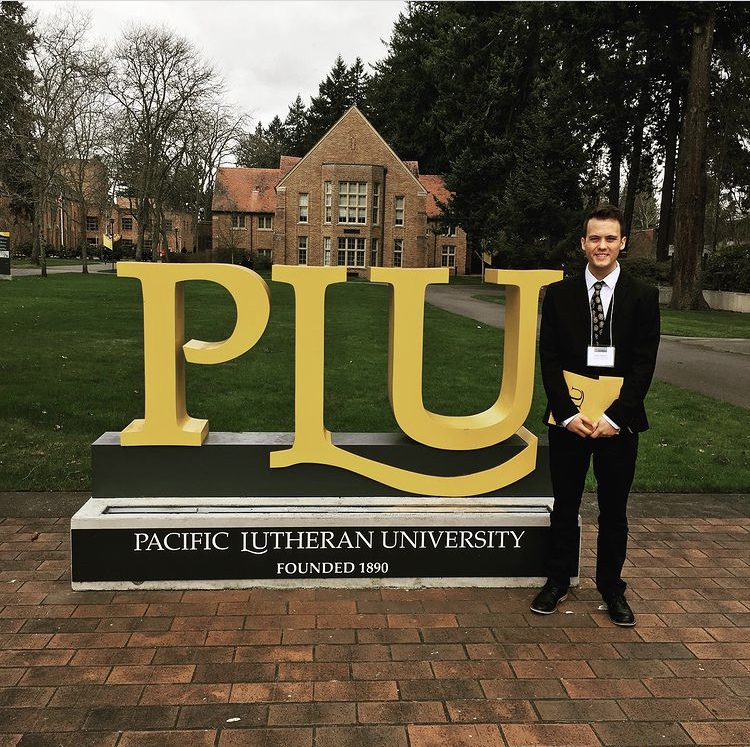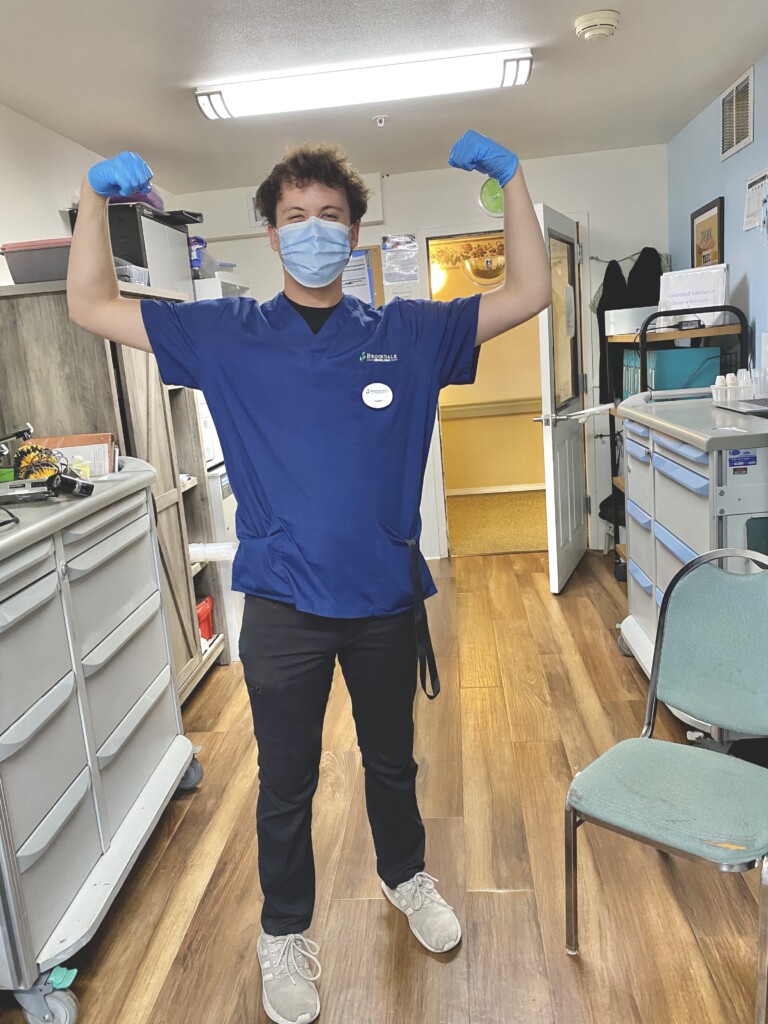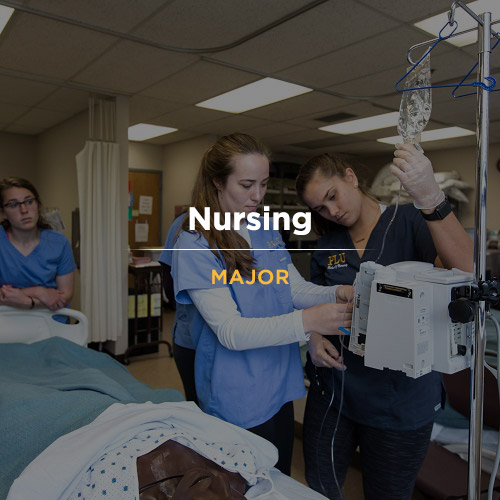Summer Job Spotlight: Nursing
Nursing student finds joy in working at assisted living facility

Parker Simpson ’24 is spending his summer working at an assisted living facility in his hometown of Spokane, Washington.
He comes from a family of healthcare professionals and has always wanted to help people. We sat down with him to discuss his experience taking classes in the Rieke Science Center, which is currently undergoing improvements to ensure students like Simpson get the best educational experience possible.
Why did you want to study nursing?
I chose to study nursing because caring for others is extremely important to me, and I am also extremely interested in biology. So, combining those two aspects in a major like nursing seemed like a great idea. Also, my grandma is a nurse, my brother’s a nurse and my sister’s a nurse, so I have had a lot of people in my life who acted as nursing role models for me who were able to show me what great work nurses do.
You spent your first-year taking classes remotely because of COVID-19. What was it like to finally be back in the classroom as a teaching assistant for Professor of Biology Michelle Crites?
It was important for me to be a TA because it was like I was taking the class again, but I got the in-person experience. For Anatomy & Physiology, it was a completely different scenario … to explore the dissection process and have a physical cadaver before us instead of looking at a computer. A lot of the body’s veins and arteries are not the same, so being on a computer was not as helpful for me in understanding the physical body.
This summer, work is being done to improve the Anatomy and Physiology Lab by upgrading virtual learning equipment and room ventilation. There are plans to update Leraas Lecture Hall next summer. Those renovations could include converting it to a single level with flexible classroom space, media, and remote connectivity teaching equipment. How do you feel about these improvements?
It’s great!
We constantly move around in our labs since we often go from one workstation to another. But the improvements to the classrooms are also a safety thing. Sometimes we have sharp objects or hazardous materials we are working with, so being in a lecture-type setting creates a hazardous situation. One thing we had a struggle with was the example dissections. Those are projected onto a screen while Professor Crites is dissecting. She had to move a projector every time so everyone could see it. So eventually, there will be a camera over the dissection tray broadcasting video onto a screen.
There is still a lot of work to be done to ensure the improvements provide future health professionals with training and exposure to the practical use of connected health technologies in a team-based environment. You likely won’t benefit from all the future upgrades, but what are your thoughts on the plans to improve the facility and technology?
You know, investing in the sciences at PLU is investing in future nurses of our community. It is also investing in future physical therapists and doctors — all sorts of future healthcare professionals. So, investing back into PLU is investing in the future of public health and care. It’s investing in your future.





Social Media